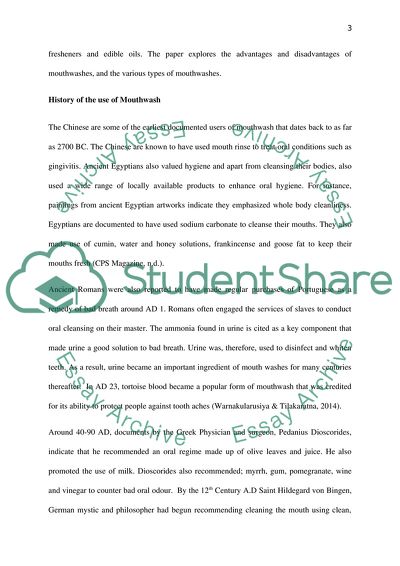Cite this document
(Mouthwash Advantages and Disadvantages Essay Example | Topics and Well Written Essays - 4750 words, n.d.)
Mouthwash Advantages and Disadvantages Essay Example | Topics and Well Written Essays - 4750 words. https://studentshare.org/biology/1844435-do-the-advantages-of-using-mouthwash-far-outweigh-the-disadvantages
Mouthwash Advantages and Disadvantages Essay Example | Topics and Well Written Essays - 4750 words. https://studentshare.org/biology/1844435-do-the-advantages-of-using-mouthwash-far-outweigh-the-disadvantages
(Mouthwash Advantages and Disadvantages Essay Example | Topics and Well Written Essays - 4750 Words)
Mouthwash Advantages and Disadvantages Essay Example | Topics and Well Written Essays - 4750 Words. https://studentshare.org/biology/1844435-do-the-advantages-of-using-mouthwash-far-outweigh-the-disadvantages.
Mouthwash Advantages and Disadvantages Essay Example | Topics and Well Written Essays - 4750 Words. https://studentshare.org/biology/1844435-do-the-advantages-of-using-mouthwash-far-outweigh-the-disadvantages.
“Mouthwash Advantages and Disadvantages Essay Example | Topics and Well Written Essays - 4750 Words”. https://studentshare.org/biology/1844435-do-the-advantages-of-using-mouthwash-far-outweigh-the-disadvantages.


